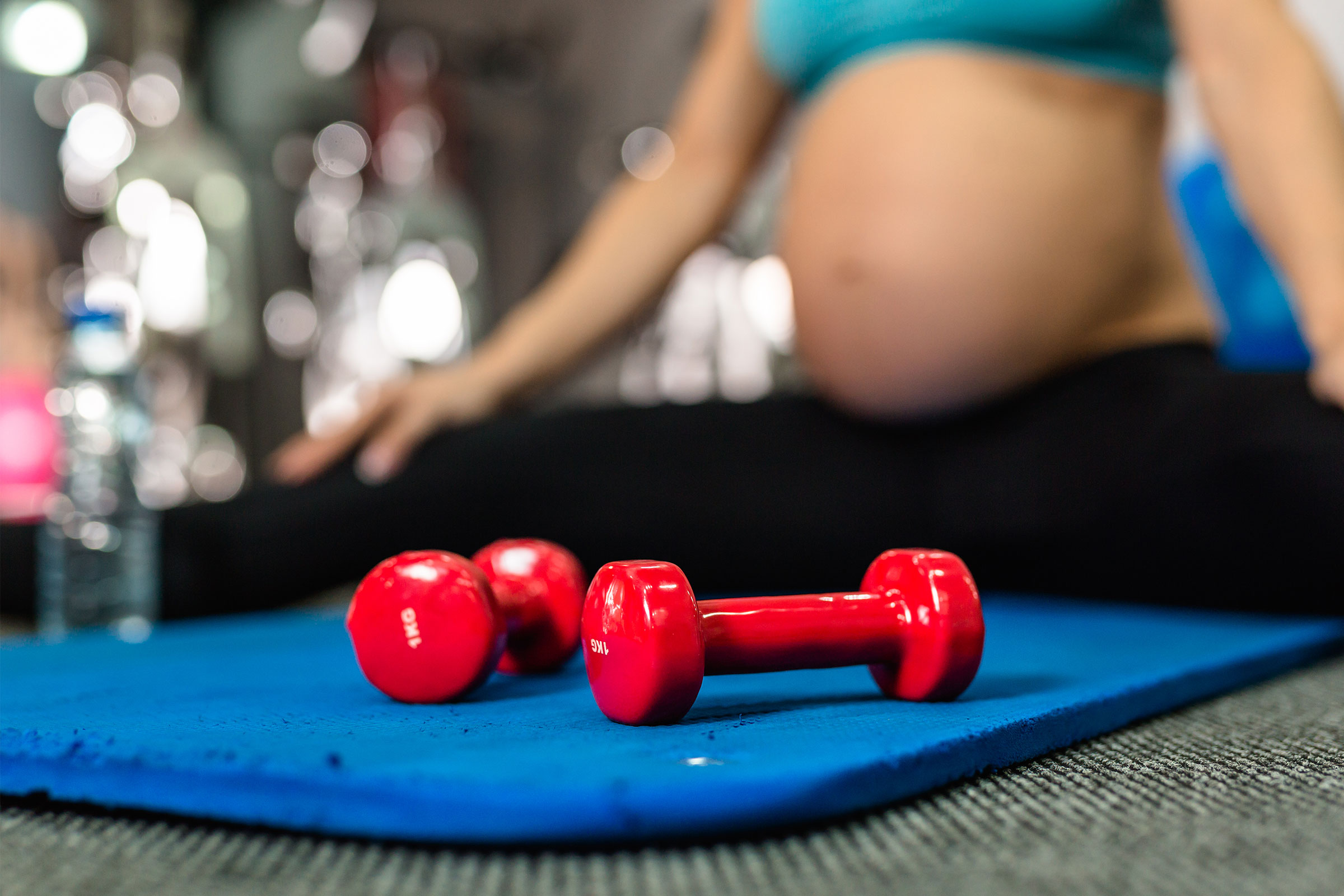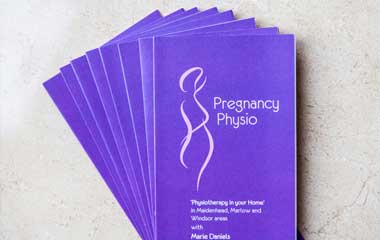
Pelvic Girdle Pain
Pelvic pain is a common condition, affecting 1 in 5 pregnant women. It used to be known as Symphysis Pubis Dysfunction (SPD) but is now known as Pelvic Girdle Pain (PGP), which covers pain felt in the pubic region, lower back, hips, groin, outer thighs or even knees. It typically involves the sacroiliac joints at the back and/or the symphysis pubis joint at the front.
PGP is usually caused by the three joints in the pelvis moving unevenly, which can lead to instability and pain in the pelvic girdle. As the baby develops, the extra weight and change in the way pregnant women sit, stand and walk will put additional strain on the pelvis area. Women are more likely to suffer from PGP if there is a pre-existing or past back/pelvis injury or have hypermobility syndrome, whereby the joints stretch more than normal.
Pain is usually made worse by movement, for example:
- Walking on uneven surfaces/rough ground or for long distances
- Moving your knees apart, like getting in and out of the car
- Standing on one leg, like climbing stairs, dressing or getting in or out of the bath
- Rolling over in bed
Our Physiotherapy treatment for pelvic girdle pain may help with:
- Manual therapy to gently mobilise or move the joints to restore pelvic symmetry
- Massage to release tightness in muscles that are being overused through poor posture
- Pelvic floor and gluteal (buttock) strengthening exercises to assist in stabilising the spine and pelvis and improve balance and posture
- Education and advice on the best positions for movement and rest and how to pace your activities to reduce pain
- Advice on a sacroiliac belt to provide support to the pelvis and alleviate the pain
Postural Strain
Pregnancy results in a natural but gradual weight gain, which causes changes to the centre of gravity (COG), balance and position of the spinal curves causing women to adopt poor posture with an increased lumbar lordosis (arched spine). This often leads to back pain.
Our Physiotherapy may include:
- Correction of poor posture
- Releasing tight muscles that are overused
- Strengthening the core, specifically activating pelvic floor muscles and gluteal muscles to help stabilise the spine
- 1:1 Pilates exercises to improve flexibility, posture and strength around the lower back
Pelvic Floor Muscle Strengthening
The pelvic floor comprises a group of muscles and tissues that forms a sling, or hammock, at the bottom of your pelvis. This sling supports the womb, the bladder and the bowels. Factors such as pregnancy, childbirth, aging and weight gain can weaken the pelvic floor in women which can lead to urinary incontinence or leakage. Pelvic floor muscle exercises should be taught to the pregnant woman in the antenatal period to help prevent or lessen urinary leakage and should be continued into the postnatal period to reduce the incidence of stress urinary incontinence.
Pelvic floor muscle exercises can help:
- Improve bladder and bowel control
- Your body support a baby if you are pregnant
- Reduce the risk of a prolapse
- Improve recovery from childbirth
- Increase sexual sensation
- Increase social confidence and quality of life
Most women are not aware of how to engage their pelvic floor muscles correctly and what they should be feeling. Physiotherapy can help if you have difficulty identifying your pelvic floor muscles, are unsure if you are performing the exercises correctly or are continuing to experience bladder or bowel control symptoms.
Pelvic floor muscle exercises or Kegel exercises should include slow, held contractions (slow twitch fibres) and shorter, faster contractions (fast twitch fibres). Aim for 10 second hold x 10 reps (slow twitch) and 10 squeezes (fast twitch) in a variety of positions.
There is growing evidence that women who exercise in pregnancy cope better with labour as they have better endurance and exercise facilitates a quicker postnatal recovery as toned muscle stretches better and returns to normal more easily.
As a general guide for postnatal exercise:
- 0-6 weeks walking, core stability, pelvic floor muscle exercises
- 6-12 weeks low impact eg: swimming, gym, power walking, cycling.
- Muscle strengthening (always check for DRA) – core stability/pelvic floor muscle exercises and overall muscle strengthening programme
- 12 weeks + once developed core strength, slowly build up impact exercises
Back pain and Sciatica
The pelvic girdle and lower lumbar spine are particularly at risk during pregnancy and may predispose about 50% of pregnant women to report low back pain, with or without sciatica. The effect of hormonal influences from 6 weeks gestation can result in joint laxity that is normal in most pregnant women but sometimes may lead to joint dysfunction and pain. The hormone, relaxin, is believed to cause an increased extensibility of all ligaments. This causes joint ‘losseness’ which may lead to pelvic and spinal instability and mobility problems in some women.
Our Physiotherapy treatment for back pain and sciatica aims to alleviate pain, restore mobility and function with:
- Soft tissue release and massage
- Manual therapy, such as joint mobilisations for pain relief or to reduce joint stiffness
- 1:1 Pilates to strengthen core, pelvic floor and gluteal muscles to help stabilise the spine and prevent a recurrence
Diastasis Recti Separation (DRA)
Diastasis Recti Separation (DRA) is a common condition during and post pregnancy and describes the separation of the rectus abdominis or ‘six-pack’ muscles, which meet at the midline of your stomach. It occurs because the womb (uterus) stretches the muscles in the abdomen to accommodate your growing baby, making these muscles longer and weaker.
The most common identifiable symptom of diastasis recti is a bulge or pooch in your stomach, especially when you strain or contract your abdominal muscles. Additional symptoms include lower back pain, poor posture, constipation and bloating. Women who have a strong core and had good fitness levels prior to pregnancy, deliver a large baby or have a twin pregnancy, are more at risk of developing a DRA.
It is recommended that new Mums have a 6 week postnatal check ideally with physiotherapist who is specialised in pregnancy related conditions.
Our Physiotherapy for DRA would include:
- An assessment of posture, breathing, DRA and pelvic floor screening
- Education and advice on the importance of good, healthy nutrition to support collagen regeneration
- 1:1 safe and effective Pilates exercises to improve posture, strengthen the core and pelvic floor muscles, progressing to more functional, strengthening exercises
Neck Pain and Headaches
Neck pain and headaches commonly affect women during their pregnancy. They arise through a combination of lifestyle changes, body changes, immobility, hormones and stress. The importance of good posture should not be overlooked. During pregnancy, your spine’s curve is exaggerated to accommodate the growing baby. This adds stress to the muscles in your lower back which changes the demands on the muscles in your neck and shoulders, leading to headaches and a stiff neck.
Our Physiotherapy treatment may include:
- Massage targeting your neck and shoulders to reduce pain and promote relaxation
- Joint mobilisations to the neck and upper back to reduce stiffness
- Neck stretching exercises in sitting
- 1:1 Pilates exercises to improve flexibility, posture and strength around the neck, mid back and lower spine
- Advice on maintaining good posture for sleep, at your workstation and while driving
- Advice on cardiovascular exercises, such as walking, aqua -aerobics and swimming to promote relaxation, fitness and wellness
Muscle and Joint Pain
It is not uncommon to experience all types of aches and pains in your body during pregnancy, especially in the second and third trimester. Joint pain typically arises in the sacroiliac/hip region, lumbar or lower back, knee and pubic symphysis/pelvis linked to ligament relaxation due to the hormone relaxin, increased weight on the lower extremities and postural shifts that occur to accomodate the pregnancy.
Our Physiotherapy treatment may include:
- Massage targeting your neck, shoulders and spine to reduce pain and promote relaxation
- Joint neck and lower back mobilisations to reduce stiffness
- 1:1 Pilates exercises to improve flexibility, posture and strength around the neck, mid back and lower spine








